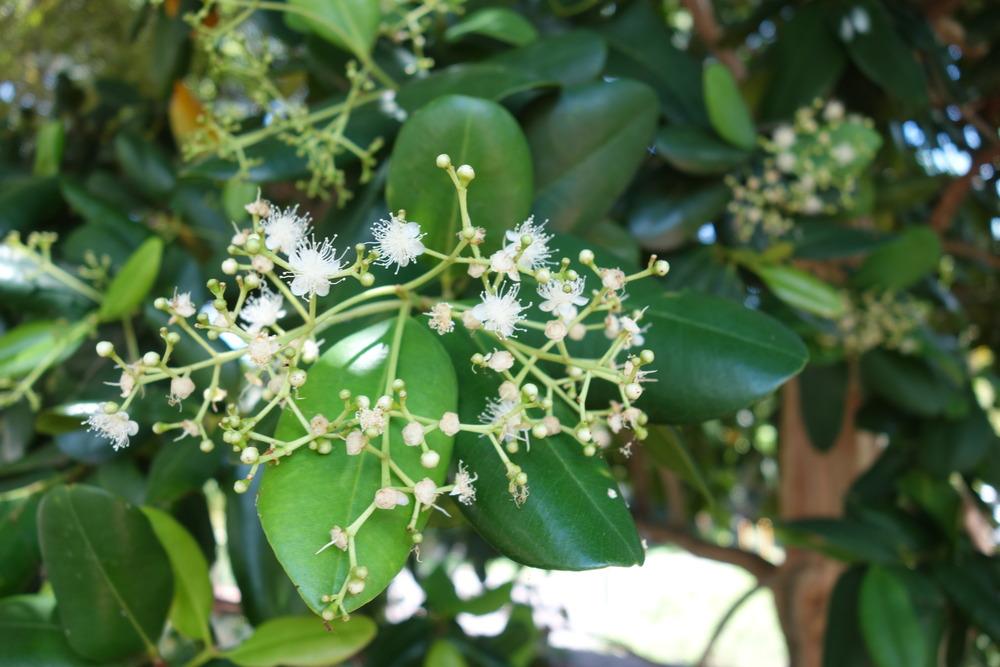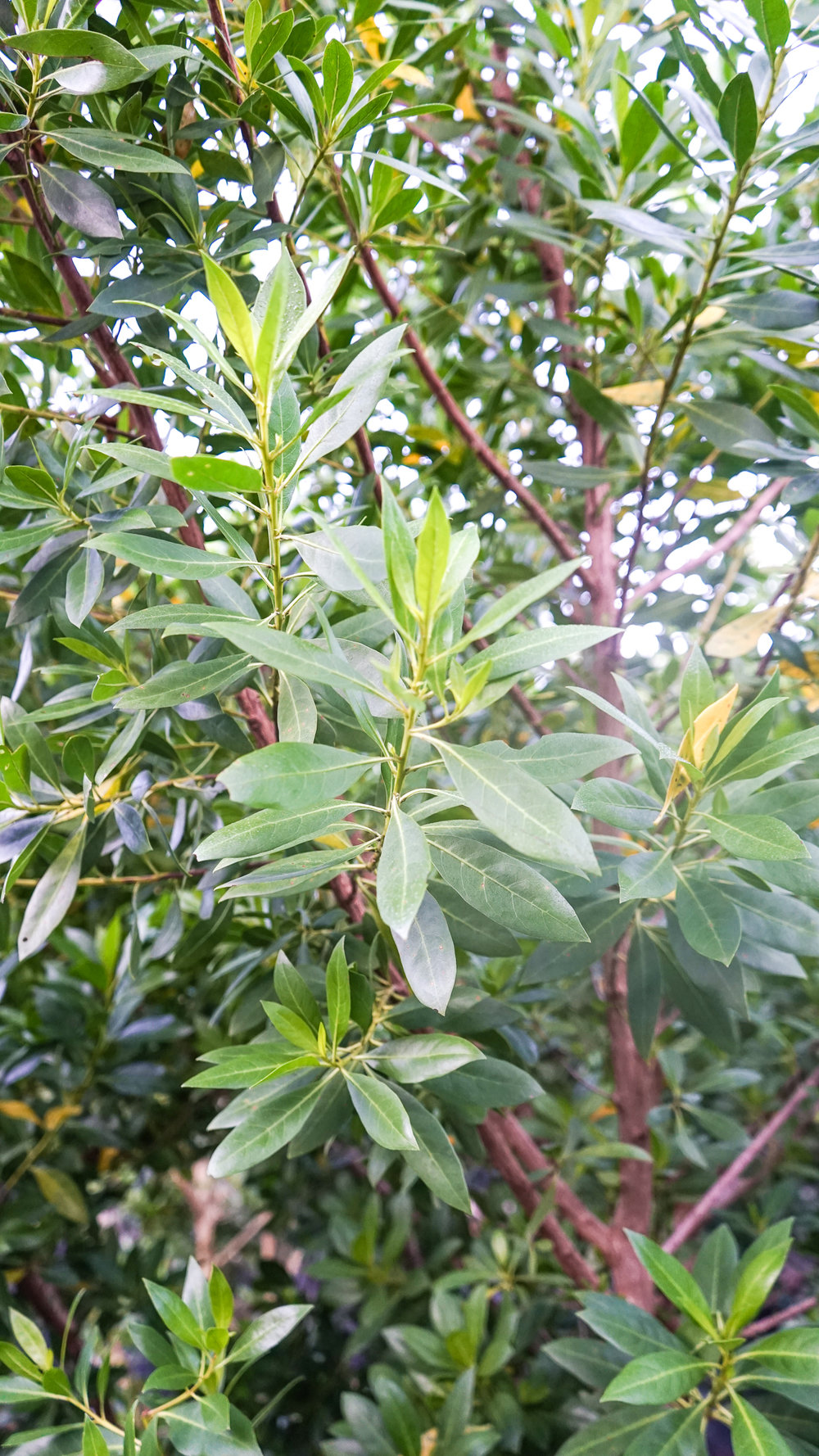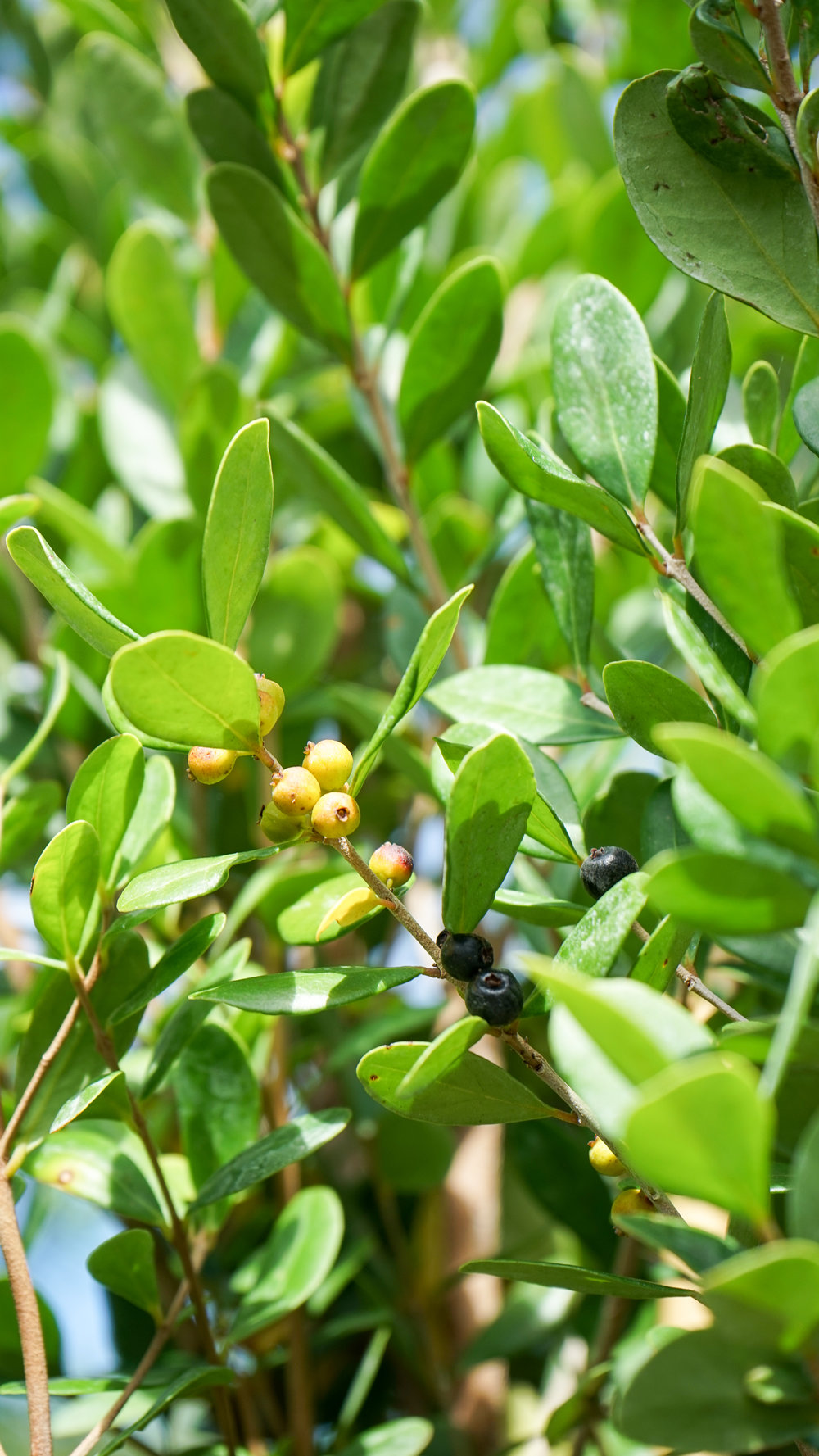
Time to breathe freely with your new tree! Learn about how to plant and care for your tree through the links below. We have also included facts on what makes your tree so unique and how it can help improve our coastal environment.
Love Your Tree
Plant your tree
How to plant your new tree:
How to avoid tree and utility conflicts:
Care for your tree
Pruning your tree:
Adding mulch:
Plant health care:
Insects and disease:
About Your Tree
Avocado (Persea americana)
- Native to central America and India
- Full sun
- Medium to large size
- Fruit trees are not allowed to be orchard pruned within city limits, consult an ISA certified arborist for pruning.
- Somewhat drought tolerant, but do not overwater, once or twice weekly
- Small bunches of flowers, not showy, flowering in spring to summer.
- Only 1 in every 10,000 flowers will become a fruit.
- Susceptible to a variety of pests and pathogens. Keeping the tree healthy lowers the chance of infection/infestation.
Bay Rum (Pimenta racemosa)
- Found in the Caribbean and northern South America
- Its crushed leaves have a distinct odor with traces of clove and cinnamon
- A tall, upright tree that grows to be 4-12 m tall with a trunk up to 25 cm in diameter
- Trees are evergreen, columnar or pyramidal in shape, and their branches expand upwards to give them a compact appearance
- Has fragrant, white flowers that are approximately 1.0-1.5 cm across
- Does not tolerate full shade, preferring full sun or just partial shade
- Drought, salt, and wind-tolerant to a degree
On an annual basis, a Bay Rum with an average diameter of 12” will:
- Reduce CO2 in the atmosphere by 311 lbs.
- Intercept 1,853 gallons of urban stormwater runoff
- Conserve 112 kilowatt hours of electricity
Black Ironwood (Olea capensis)
- Grows to around 30 feet tall but very slowly.
- Believed to be the densest wood of any American tree. Extremely hard.
- Small fruits ripen in winter and are enjoyed by birds. Edible to humans but can stain.
- Very wind resistant.
- Somewhat salt tolerant.
- Somewhat flood tolerant but prefers dryer soils (drought tolerant)
Green Buttonwood (Cornocarpus erectus)
- Medium-sized tree or large shrub with erected/ascended branches
- Known to be the “fourth mangrove” due to its prevalence in mangrove areas
- Its wood was once used as cabinets, firewood, and charcoal
- One of the most important trees in South Florida for epiphytes
- Provides critical food and cover for wildlife
- Its nectar attracts the amethyst hairstreak and other butterflies
- Highly salt tolerant
On an annual basis, a Green Buttonwood with an average diameter of 12” will:
- Reduce CO2 in the atmosphere by 311 lbs.
- Intercept 1,853 gallons of urban stormwater runoff
- Conserve 112-kilowatt hours of electricity
Gumbo Limbo (Bursera simaruba)
- Large tree with a medium to large canopy
- Known as the “tourist tree” because of the red, peeling bark that resembles a tourist’s sunburn
- Considered to be hurricane resistant
- Releases a resin, called chibou, cachibou, or gormatis, which is used in glue, and varnish
- Its wood was once used for the manufacture of carousel horses in the US
- Highly salt tolerant
On an annual basis, a Gumbo Limbo with an average diameter of 12” will:
- Reduce CO2 in the atmosphere by 311 lbs
- Intercept 1,853 gallons of urban stormwater runoff
- Conserve 112 kilowatt hours of electricity
Mango (Mangifera indica)
- Full sun
- Native to Asia, oldest cultivated fruit.
- Does not do well In containers or indoors.
- Some drought tolerance, but prolonged drought will affect fruit production.
- Grows large, provide adequate space for growth.
- Flowers in spring, fruits in summer. Colder spring temperatures can lead to reduced fruit production.
- Fruit trees are not allowed to be orchard pruned within city limits, consult an ISA certified arborist for pruning.
- Not seriously affected by any pests or pathogens.
Orange Geiger (Cordia sebestena)
- A moderately-sized tree with bright, fragrant flowers
- Named after a Key West pilot and friend of John James Audubon
- Highly salt tolerant
- Blooms year-round, peaking during spring and summer months
On an annual basis, an Orange Geiger with an average diameter of 12” will:
- Reduce CO2 in the atmosphere by 150 lbs.
- Intercept 908 gallons of urban stormwater runoff
- Conserve 49-kilowatt hours of electricity
Red Powderpuff (Calliandra haematocephala)
- Native to Bolivia.
- Flowers most of the year, especially when hot (most of the year!).
- Canopy can grow as wide as a tree is tall so plant accordingly.
- Good bee attractant.
- Can grow to over ten feet in height.
- Somewhat drought tolerant but cannot do long dry periods.
- Prefers full sun.
Slash Pine (Pinus elliottii)
- Native pine species.
- Benefits from a layer of mulch to keep the soil slightly moist.
- Very strong, hard wood.
- Does well with fertilizers containing Sulphur as it prefers acidic soils.
- Fast growth rate, especially when young.
- Can grow over 80 feet tall.
- Tolerant of both flooding and drought.
- Prefers full sun but can be planted in partial shade.
Spanish Stopper (Eugenia foetida)
- Hardy tree with leathery, oval leaves
- Produces clusters of small, white flowers all year, peaking in the summer
- Highly tolerant of salt wind
- The fruit is a small berry, which turns from orange to dark brown as its old bark flakes off, new and smooth orange bark is revealed
On an annual basis, a Spanish Stopper with an average diameter of 12” will:
- Reduce CO2 in the atmosphere by 110 lbs.
- Intercept 738 gallons of urban stormwater runoff
- Conserve 41 kilowatt hours of electricity
Tamarind (Tamarindus indica)
- Full sun
- High drought tolerance
- Moderate salt tolerance
- No serious pest or pathogen issues
- Tree grows large, plant with adequate space
- Flowers late spring to summer, small yellow clustering flowers.
- Fruit develops in late fall to early summer
- Native to Africa
- Grass usually does fairly well under canopy
Thatch Palm (Thrinax radiata)
- Florida native
- Slow growing, up to around 15-20 feet max.
- Produces fruit in fall, loved by birds.
- Drought tolerant
- Salt tolerant
- Full sun to partial shade. Will grow slower the shadier it is.






